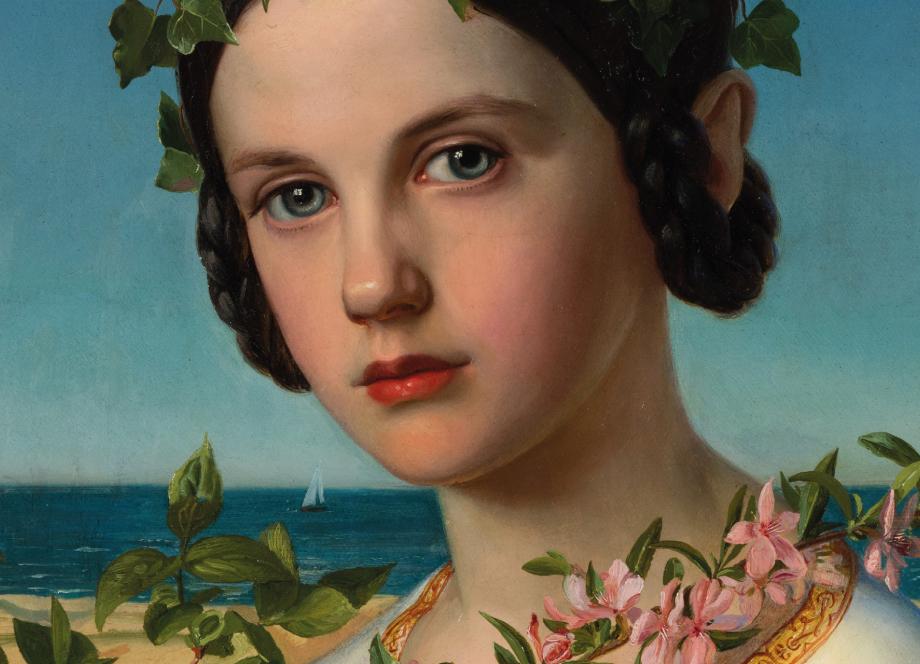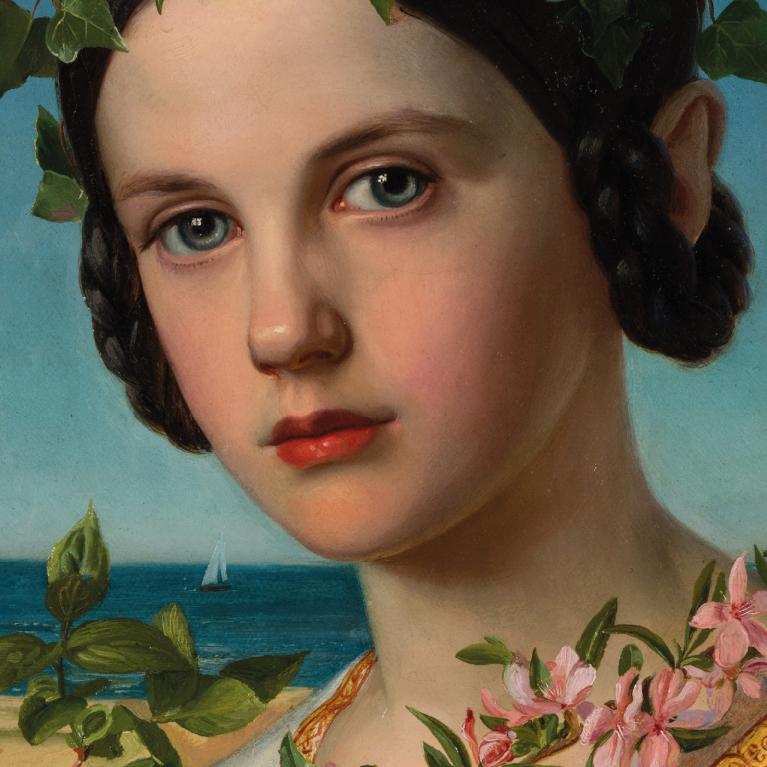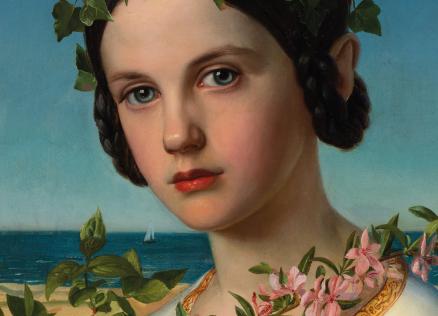From 7 October 2023 to 11 February 2024, the Art Museum RIGA BOURSE in Riga (Doma laukums 6) invites to visit an exhibition Captives of Dreams. German Romanticism from Latvian and Estonian Art Collections.
German Romanticism, as an essential driving force in the European culture of its time, impacted the further development of art, altering the aesthetic perception of the surrounding world. Interest in this art movement has also not vanished today and the varying facets of Romanticism are periodically revealed through exhibitions and expositions at European museums.
The ideological premises of Romanticism and its aesthetic developed in Germany in the late 18th century. The disillusionment in the ideals of the Enlightenment, the tragic events of the French Revolution, and the invasion into the politically fragmented territory of Germany by Napoleon’s forces amplified the sense of hopelessness and bleak reality in society. A new world view was born in these conditions among German philosophers and writers, based on the concept of the inherent value of the creative personality and the role of intuition in the discovery of the truth.
The dual world view typical of German Romanticism, in contrast to the material world, is the incessant sphere of dreams and feelings. The oeuvre of the artists expresses a longing for the reality of higher ideals and the harmony of art and life. The freedom of the personality’s creative expression, the dynamism of emotions, the mutual spiritual connection between nature and the human as well as events in national history are the objects of interest in Romantic art.
Art from the era of Romanticism is one of the largest and most important parts of the Latvian National Museum of Art’s (LNMA) collections of German paintings and graphics. The exhibition provides an introduction to about 300 works from Latvian and Estonian art museums, where magnificent collections of 19th century German and Baltic-German art have historically developed. The works of Baltic-German, Austrian and Swiss masters have also been exhibited alongside those of German artists at the exhibition, as all the German-speaking lands are united by a kindred mentality, cultural development, art schools, and the mutual migration of artists. The visual material encompasses the period from the late 1790s until the 1850s. The core of the exhibition constitutes paintings and graphics, which are supplemented by sculpture, albums, as well as books and examples of the artists’ handwriting.
The architect Liesma Markova has set up the exposition so that the viewer can experience a particular feeling when heading to the romantic night scene in the centre. Night is a time when the familiar becomes mysterious and inscrutable, when a person’s soul flies above the earth in a world of dreams. Ruins remind us of the past and embody the concept of the temporality of the material world. The figure of the departing female is associated with the eternal striving of the human spirit for the unattainable ideal, but the blue horizon reveals the concept of the endlessness of space and time, characteristic of Romanticism.
The exhibition consists of six thematic branches: Nature’s Soul is dedicated to landscape ‒ a favourite genre in German Romanticism. Portraits and artists’ self-portraits can be viewed in the Witnesses to an Era section, whereas the Beginning of Life section reveals images of children. The Italy and Other Countries part reflects artists’ impressions from their travels. Visions from the Past ‒ the perspectives of artists on historical events, literary and mythological heroes, while works in the religious genre are represented in the Eternal Themes section.
The exhibition is complemented by albums on travel and memories. German literature published in the 19th century and unique artists’ autographs from the University of Latvia Academic Library and the National Library of Latvia can be viewed at the Bosse Hall.


Project manager and exhibition curator:
Ksenija Rudzīte
Curator of the Foreign Painting Collection /
Art Museum RIGA BOURSE /
Latvian National Museum of Art
Ph: (+371) 67 357 532
E:
Curator’s assistant:
Zane Lūse
Collection Manager of the Foreign Art Department /
Art Museum RIGA BOURSE /
Latvian National Museum of Art
Team:
Valentīna Opolā
Alma Ziemele
Ilana Pārstrauta
Aija Brasliņa
Marita Bērziņa
Vita Birzaka
Restorers:
Una Kastanovska
Anna Kozorovicka
Natālija Kurganova
Zane Tuča
Literary consultant:
Aija Taimiņa /
University of Latvia Academic Library
Scenography of the exhibition:
Liesma Markova
architect
Technical solutions, construction:
Rūdolfs Cunskis
Emīls Murziņš
Kārlis Baumanis
Graphic design:
Kristīne Jansone
Visual Communication Specialist /
Art Museum RIGA BOURSE /
Latvian National Museum of Art
Education programme:
Daiga Upeniece
Vita Ozoliņa
Anna Emsiņa
Ieva Velberga /
Art Museum RIGA BOURSE /
Latvian National Museum of Art
Special thanks to:
Liisa Kaljula / Art Museum of Estonia
Kristiina Tideberg / Art Museum of Estonia
Ingūna Ģēģere / Zuzeum Art Centre
Kristīne Budže / Rundāle Palace Museum
Inga Karlštrēma /Museum of the History of Riga and Navigation



